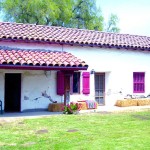Books are big sellers during the holidays. These are two standouts that make wonderful gifts for both the traveler and non-traveler.
The first is “Atlas Obscura: An Explorer’s Guide to the World’s Hidden Wonders” (Workman Publishing Co; $35).
Call it cocaine for the curious because one look inside this catalogue and you’ll be hooked and wanting more. The 470-page volume is a treasure trove of our planet’s quirky and completely outrageous people, places and things.
The 700-item collection was assembled by authors Joshua Foer and Dylan Thuras and editor Ella Morton, who spent four years giving a consistent tone to each of the entries.

An Australian native who came to New York City seven years ago, Morton is a nonfiction writer who was hosting a web show that spotlighted the city’s underground oddities. She came across the Atlas Obscura website, founded in 2009 by Foer and Thuras, just when they needed an editor for their upcoming book.
“We started with places that Josh and Dylan had come across, then opened it up to others,” Morton said in a telephone interview from her Brooklyn office. “We currently have about 10,000 attractions. There are 700 in this book and there will be future books.”
Readers can open any page and begin reading entries that are categorized by continents, countries and regions. Southern California’s entries, among others, include Slab City, community of artists and misfits near Niland; California City (“the largest city never built”), an hour southwest of Death Valley; and Fresno’s Forestiere Underground Gardens — hand-carved catacombs where a citrus grove thrives. (Who knew?)

If you prefer to get your kicks indoors, there are museums listed that are dedicated to asparagus (Schrobenhausen, Germany); jewelry made from human hair (Kansas City, Mo.); voodoo (New Orleans, of course); male genitalia (you’ll have to go to Iceland for this one); and frogs and guns (yes, in the same building; “… the relationship is not clear,” say the authors.)
“Atlas Obscura” reminds us there are so many things to see in the world and so little time. There are coffins hanging from a cliff in the Philippines; a 60-ton meteorite (the largest to hit the earth) in Namibia; carnivorous plants that swallow frogs and birds in Myanmar; a chapel constructed from human bones in Poland; and for the exceedingly brave or insane, urine-soaked hard-boiled eggs in Dongyang (eastern China). Visit atlasobscura.com.
My second pick is “Cuba’s Car Culture: Celebrating the Island’s Automotive Love Affair” (Quarto Publishing Group; $35).
Everyone knows of Cuba’s vintage cars but not much of their history. Writer Tom Cotter, photographer Bill Warner and automotive historian Wellington Morton give us page after page of glorious color photos and easy-to-digest narrative on the history of Cuba’s cars, the country and its proud people.

Within the narrative are gems that make the island nation’s story come alive. For instance, during the 1950s, money was so plentiful in Cuba that more Cadillacs were sold per capita than any place in the world. “And since many of (former President Fulgencio) Batista’s followers owned Caddys, some of the cars on the road today may have a direct lineage to the controversial leader’s regime.”
And there’s this: “During the actual revolution, (Fidel) Castro drove a green 1959 Oldsmobile equipped with a V-8 engine, a Hydramatic transmission, and power steering.” Younger brother Raul Castro drove a 1951 Chevy, and Che Guevara’s vehicle of choice was a 1960 Chevy, now on display at the Deposito del Automovil car museum in Havana.
Just how many pre-1960 road relics are on still cruising Cuban roads?
About 60,000, say the authors, mostly in Havana and Santiago de Cuba. About half of the cars were made in the 1950s, a quarter in the 1940s, and amazingly, a quarter in the 1930s.
“We even saw some 80-year-olds — Model A’s and 1935 Fords — that were still operating on a daily basis,” writes Cotter. “Compound that age with incredibly rough roads, poor gas quality, and an almost complete absence of correct spare parts, and you’ll begin to appreciate just how ingenious the Cubans are.”
Visit QuartoKnows.com.
E’Louise Ondash is a freelance writer living in North County. Tell her about your travels at [email protected]




1 comment
Don’t forget to give the books in e-reader and Kindle format. Some of us can’t hold those beautiful books anymore but we still love to read.
Comments are closed.